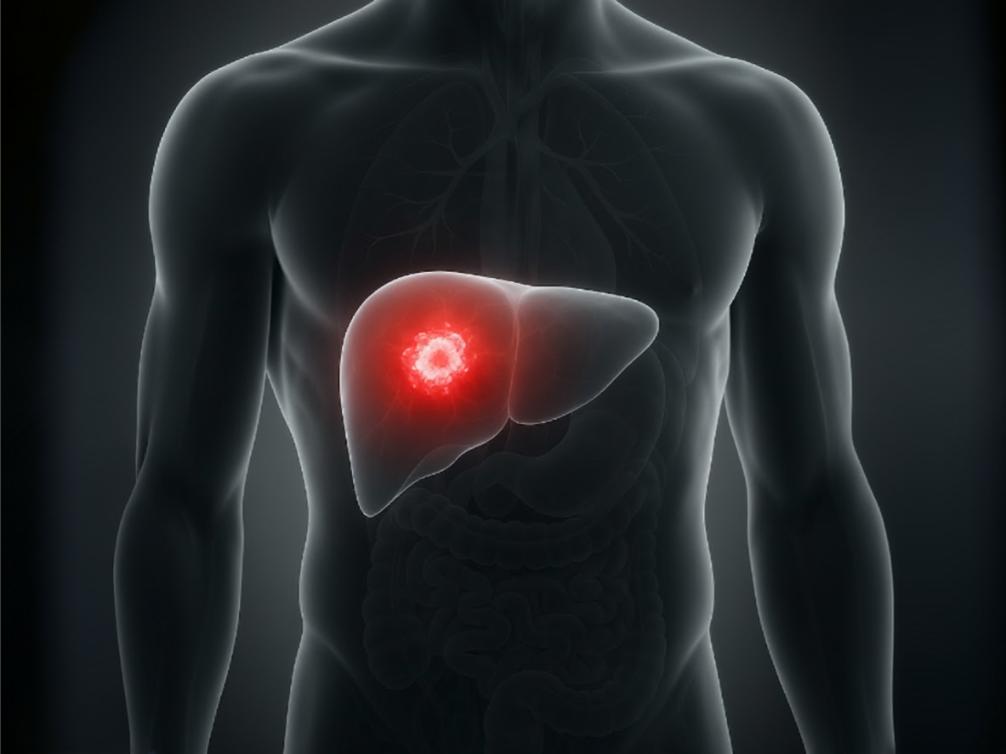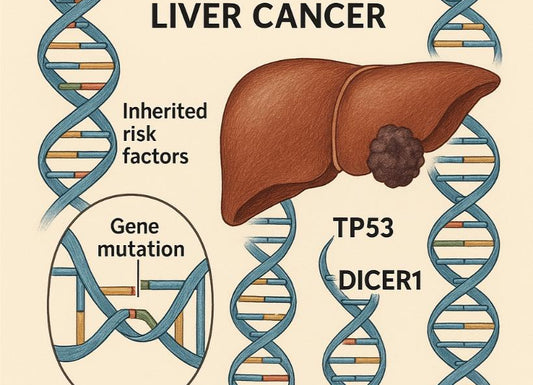Liver Lesions: Causes, Diagnosis, and Treatment Options
 Written By
Abel Tamirat, MD
Written By
Abel Tamirat, MD

Liver lesions can be a daunting term to come across, whether during routine health check-ups or a targeted testing. For many, this discovery sparks a flurry of questions and concerns. Are they dangerous? What causes them? How do they affect health, and what treatment options are available?
This guide aims to shed light on liver lesions by exploring their causes, types, symptoms, diagnosis, and treatment options. Whether you're a patient, a caregiver, or a medical professional, this comprehensive breakdown will help you better understand this condition and the steps toward addressing it.
What Are Liver Lesions?
Liver lesions are abnormal growths or masses that form on the liver. These lesions can be categorized as either benign (non-cancerous) or malignant (cancerous). While some may never cause symptoms or require treatment, others can significantly impact health, making accurate diagnosis essential.
Difference Between Cysts and Lesions on the Liver
-
Cysts are fluid-filled sacs within the liver, often benign and harmless unless they grow large enough to cause discomfort.
-
Lesions, in a broader sense, refer to any abnormal tissue, which may include solid masses (benign or cancerous) or other abnormalities.
Understanding the nature of these liver abnormalities is crucial for determining treatment and outcomes.
Risk Factors and Causes of Liver Lesions in Adults
Who Is Most at Risk?
Some individuals are more likely to develop liver lesions due to certain conditions or lifestyles. Risk factors for liver lesions include:
-
Chronic liver diseases such as cirrhosis
-
Viral hepatitis (B or C)
-
Excessive alcohol consumption
-
Genetic disorders like hemochromatosis
-
Obesity and non-alcoholic fatty liver disease (NAFLD)
-
Hormone use (such as birth control pills or anabolic steroids)
What Causes Lesions on the Liver in Non-Drinkers?
While alcohol is a commonly known culprit for liver-related damage, non-drinkers are not immune to developing liver lesions. Causes include:
-
Non-alcoholic fatty liver disease (NAFLD): Often linked to obesity, diabetes, high cholesterol, or metabolic syndrome.
-
Hepatitis infections: Both viral (like hepatitis B or C) and autoimmune hepatitis can damage the liver and lead to lesions.
-
Genetic disorders: Conditions such as hemochromatosis or Wilson's disease may disrupt liver function and contribute to lesion development.
-
Environmental toxins or medications: Long-term exposure to toxins or certain medications can impact liver health.
-
Systemic conditions: Diseases like sarcoidosis or tuberculosis may also play a role.
Are Spots on the Liver Dangerous?
Benign vs. Malignant Lesions on the Liver
-
Benign lesions like hemangiomas or focal nodular hyperplasia (FNH) are generally harmless, often discovered incidentally during imaging tests. They rarely cause symptoms unless they grow large in size.
-
Malignant lesions, on the other hand, are cancerous and require prompt treatment. Primary liver cancer, such as hepatocellular carcinoma (HCC), is often linked to underlying liver disease.
Can Liver Lesions Be Cancerous?
Yes, liver lesions can be cancerous. Malignant lesions may originate within the liver (primary liver cancer) or spread from other parts of the body (secondary or metastatic liver cancer). Early detection is key to effective management.
Symptoms of Liver Lesions and Their Psychological Impact
Symptoms of Lesions in the Liver

Liver lesions often don’t produce symptoms, especially if they’re small or benign. However, in some cases, symptoms may include:
-
Abdominal pain or discomfort: Often felt in the upper right side of the abdomen, this pain may vary in intensity depending on the lesion's size and location.
-
Unexplained weight loss: Sudden and unexplained weight loss may be linked to underlying liver issues.
-
Fatigue: Persistent tiredness or lack of energy can result from the strain on the liver and its impaired function.
-
Jaundice: Yellowing of the skin and eyes occurs when the liver cannot process a metabolic product called bilirubin effectively.
-
Nausea or vomiting: Digestive disturbances may accompany liver lesions in some cases.
-
Swelling or bloating: Fluid accumulation in the abdomen (ascites) can be a sign of liver dysfunction.
Do Liver Lesions Cause Pain?
While many benign lesions are usually asymptomatic, larger or malignant lesions can cause pain, particularly in the right upper abdomen.
Coping with a Diagnosis
Receiving a diagnosis of liver lesions can be emotionally overwhelming. It’s vital to lean on support networks, such as family, friends, or support groups, and seek guidance from mental health professionals when needed.
Liver Lesions in Different Age Groups
Are Liver Lesions Common in Young Adults?
Liver lesions are fairly common in adults of all ages, but their prevalence does increase with age. In younger adults, liver lesions may be less common, but they can still occur for a variety of reasons. Certain benign lesions like hemangiomas or FNH are sometimes seen in young adults, especially women of childbearing age. Hormonal factors often play a role in their development.
Impact on Older Individuals
As we grow older, the liver undergoes natural changes that can make it more vulnerable to certain conditions, including liver lesions. Research indicates that 25-50% of liver lesions found in older adults are benign, such as hemangiomas or cysts. However, some lesions may signal more serious concerns, like liver cancer, which ranks as the sixth most common cancer worldwide and is more prevalent in individuals over 65. Aging also compromises the immune system, increasing the likelihood of liver infections and autoimmune disorders. Furthermore, the liver becomes less efficient at metabolizing alcohol, heightening the risk of alcohol-related damage. Also, Older adults are more likely to experience liver lesions linked to chronic conditions like cirrhosis, hepatitis, or fatty liver disease. Prioritizing regular medical check-ups and maintaining healthy lifestyle habits are essential steps to safeguard liver health as we age.
Diagnosis and Prognosis of Liver Lesions

The process of identifying liver lesions typically begins with imaging techniques like ultrasound, CT scans, or MRI, which offer detailed visuals of the liver to pinpoint abnormalities. If a suspicious lesion is detected, further diagnostic steps may involve blood tests to assess liver function and identify specific markers or a biopsy to directly examine the tissue. Early detection is crucial, as smaller lesions are more likely to be benign and easier to manage if treatment is necessary. The prognosis depends on various factors, including the lesion's type, size, and whether it is benign or malignant. For malignant lesions, the cancer stage and the liver's overall health are critical in determining outcomes.
Liver Lesions and Underlying Conditions
Lesions on Liver and Hepatitis Correlation
Hepatitis B and C infections are significant risk factors for liver cancer. They cause chronic inflammation that can lead to scarring and subsequent development of malignant lesions.
Lesions on Liver and Fatty Liver Disease
Fatty liver disease, especially non-alcoholic fatty liver disease (NAFLD), is increasingly recognized as a significant risk factor for both benign and malignant liver lesions. As obesity rates rise globally, the prevalence of NAFLD and its advanced form, non-alcoholic steatohepatitis (NASH), which can progress to cirrhosis and hepatocellular carcinoma (HCC), also increases
Treatment Options for Liver Lesions
When Is Treatment Needed?
Treatment options depend on the lesion type:
-
Benign lesions typically require no intervention unless they grow large or cause symptoms.
-
Malignant lesions necessitate treatments like surgery, chemotherapy, ablation, or liver transplants.
Natural Remedies for Liver Lesions
Herbs like milk thistle and dandelion root are often touted as natural remedies for liver health. While they may support liver function, it’s important to consult a doctor before trying natural remedies for liver lesions to ensure safety and appropriateness.
Diet, Lifestyle, and Liver Health
Dietary Recommendations for Individuals with Liver Lesions
A liver-friendly diet emphasizes:
-
Foods rich in antioxidants, like leafy greens and berries
-
Lean protein sources, such as legumes and fish
-
Adequate hydration
Avoid excessive alcohol, processed food, and high-sugar diets, which can burden the liver.
Role of Alcohol and Smoking in Liver Lesions
Both habits significantly increase the risk of liver damage and cancer. Quitting these can protect and improve liver health.
Monitoring and Follow-Up Care
How to Monitor Liver Lesions Over Time
Regular imaging and blood tests are critical for tracking changes in liver lesions. Your healthcare provider will recommend monitoring frequency based on the type and size of the lesion.
Keeping an Eye on Liver Health at Home
Taking care of your liver doesn’t have to be complicated. Regular check-ups are essential, but having an easy way to monitor your health in between doctor visits can make a difference.
Ribbon Checkup’s at-home urine test kit offers a simple way to keep tabs on key liver health markers like bilirubin and urobilinogen. With just a quick test at home, you can get insights that help you stay informed and proactive.
Why Consider It?
-
Easy to Use: No needles, no lab visits—just a straightforward urine test.
-
Quick Results: Get an idea of your liver health within minutes.
-
Early Awareness: Spot potential issues before they become bigger concerns.
-
Great for Routine Monitoring: Especially useful for those managing liver conditions or at higher risk.
It’s not a replacement for medical advice, but it’s a small step that can help you stay on top of your liver health. A little awareness goes a long way!
Success Stories and Hope for the Future
Real-Life Stories of People with Liver Lesions
Many people with liver lesions lead healthy, fulfilling lives with the right treatment and monitoring. Stories of successful recoveries and management often inspire hope for those newly diagnosed.
Latest Research on Liver Lesions
Advancements in AI and imaging technology are improving the early detection and treatment of liver lesions. Exciting research is paving the way for less invasive diagnostic methods and more targeted therapies.
Taking Charge of Your Liver Health
Liver lesions may sound intimidating, but most are manageable with early detection, routine liver tests and proper care. Routine check-ups, a healthy lifestyle, and clear communication with your healthcare provider are your best defense. If you have concerns about your liver health, don’t hesitate to seek medical guidance.
Written by Abel Tamirat, MD
Dr. Abel Tamirat is a licensed General Practitioner and ECFMG-certified international medical graduate with over three years of experience supporting U.S.-based telehealth and primary care practices. As a freelance medical writer and Virtual Clinical Support Specialist, he blends frontline clinical expertise with a passion for health technology and evidence-based content. He is also a contributor to Continuing Medical Education (CME) programs.
Related References
- Liver Pain Location: Understanding Its Causes and Symptoms
- Early Detection of Liver Disease
- What Cancers Cause Elevated Liver Enzymes?
References
-
Liver Foundation. (2022). Liver lesions. Retrieved from https://liver.org.au/your-liver/liver-diseases/liver-lesions/
-
Llovet, J. M., Kelley, R. K., Villanueva, A., Singal, A. G., Pikarsky, E., Roayaie, S., Lencioni, R., Koike, K., Zucman-Rossi, J., & Finn, R. S. (2021). Hepatocellular carcinoma. Nature Reviews Disease Primers, 7(1). https://doi.org/10.1038/s41572-020-00240-3
-
Nelson, A. (2017, September 6). What are liver lesions? WebMD. Retrieved from https://www.webmd.com/hepatitis/liver-lesions
-
Yetman, D. (2022, April 28). What are liver lesions? Healthline. Retrieved from https://www.healthline.com/health/liver-lesions
-
American Liver Foundation. (2022, May). Benign liver tumors: Types & facts. Retrieved April 2, 2025, from https://liverfoundation.org/liver-diseases/complications-of-liver-disease/benign-liver-tumors/
-
Mayo Clinic. (2025). Liver cancer - Symptoms and causes. Retrieved April 2, 2025, from https://www.mayoclinic.org/diseases-conditions/liver-cancer/symptoms-causes/syc-20353659

Dr. Abel Tamirat is a licensed General Practitioner and ECFMG-certified international medical graduate with over three years of experience supporting U.S.-based telehealth and primary care practices. As a freelance medical writer and Virtual Clinical Support Specialist, he blends frontline clinical expertise with a passion for health technology and evidence-based content. He is also a contributor to Continuing Medical Education (CME) programs.



